10+ Sample Grant Program Evaluation
-

Grant Program Evaluation Report
download now -
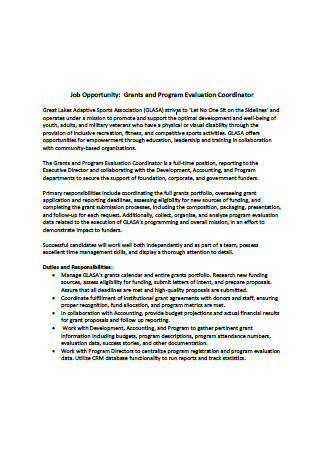
Grant and Program Evaluation Coordinator
download now -
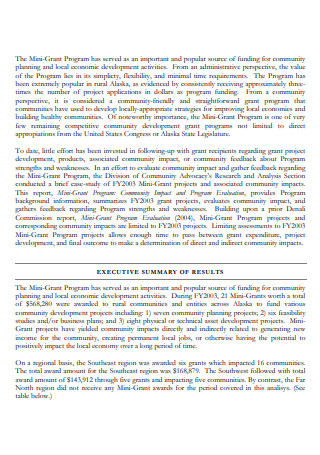
Mini Grant Program Evaluation
download now -
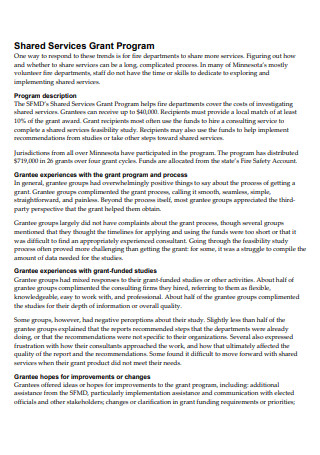
Services Grant Program Evaluation
download now -
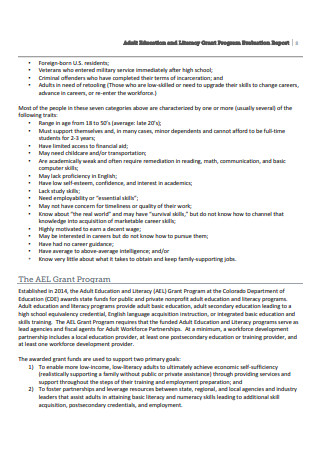
Adult Education and Literacy Grant Program Evaluation Report
download now -
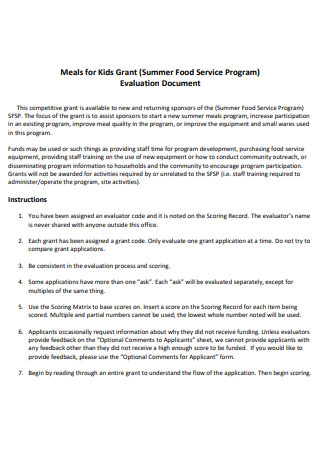
Grant Service Program Evaluation
download now -
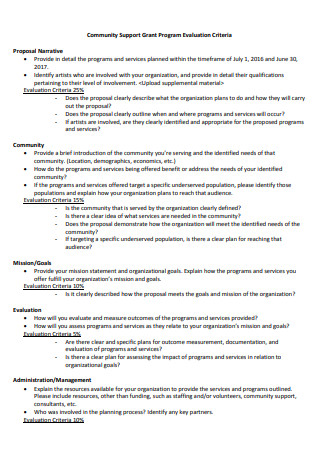
Community Support Grant Program Evaluation
download now -
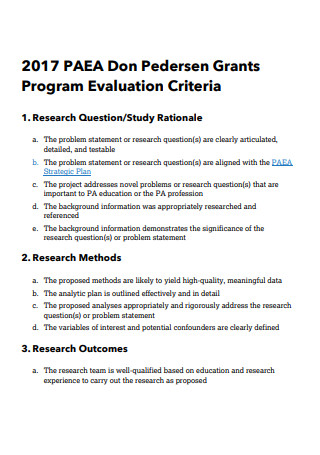
Grant Program Evaluation Example
download now -
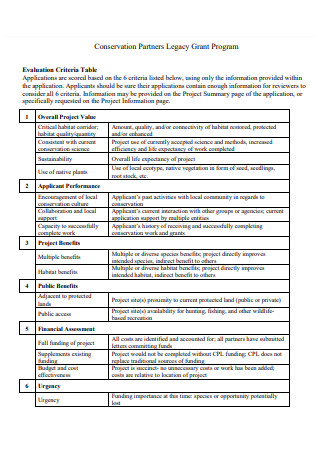
Conservation Partners Legacy Grant Program Evaluation
download now -
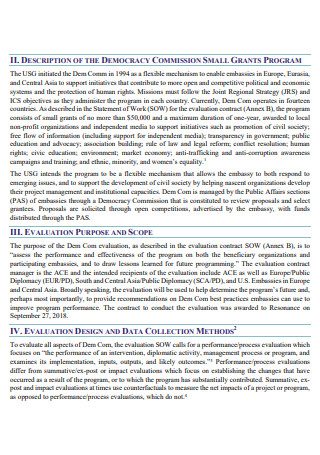
Democracy Commission Small Grant Program Evaluation
download now -

Grant Program Project Evaluation
download now
FREE Grant Program Evaluation s to Download
10+ Sample Grant Program Evaluation
What Is a Grant Program Evaluation?
What’s In a Grant Program Evaluation?
How to Develop a Grant Program Evaluation
FAQs
What is the typical lifespan of a grant?
What is qualitative data collection?
What is a general purpose grant?
What Is a Grant Program Evaluation?
Before we define the grant evaluation, we need to know what a grant is first. What is it? A grant is usually referred to as a financial award that is provided by a company, a foundation, or the government to an individual, an organization (usually a non-profit one), or another company so that they can perform the objectives that they’ve set for their beneficiaries or simply to incentivize their performance. The programs or objectives that usually benefit from the grant money can include innovative research, improvement of community facilities, and so on. While they are largely similar to loans in the sense that an entity provides funds to another entity, grants are much more advantageous since no repayment to the sponsor is required, essentially making them gifts.
What is a grant program evaluation? This is a document that may take the form of an evaluation plan, which provides information to improve a project during its implementation phase. A grant program evaluation is necessary because the grantee must demonstrate to the grant funder that they have succeeded in reaching the results they have requested, or that they are working to overcome hurdles. Furthermore, a well-designed grant program assessment will guarantee that the grantee receives the particular grant financing for the remaining years of the award, as well as that the grantor and others have faith in the grantee to award additional grants in the future. Having an evaluation also helps the beneficiary organization demonstrate how accountable they are to the public’s trust.
What’s In a Grant Program Evaluation?
As mentioned, a grant program evaluation can take the form of an evaluation plan which provides the opportunity to improve the funded projects when it is being implemented. With that being said, here are the key parts that should be present when making an evaluation plan for a grant program:
How to Develop a Grant Program Evaluation
Having your grant program evaluated is very necessary as it gives your organization an insight as to what works, what doesn’t work, and what needs to be done in order to improve the program supported by the grant. With that being said, here’s how to develop a proper grant program evaluation document:
1. Identify What Needs to be Evaluated
This is the first important step of creating the grant program evaluation document. In this step, understand what parts of the project or program being supported will need to be evaluated. Typically, the operations are evaluated and proven to have accomplished the objectives and produced the desired results. This should already be conveyed in the grant proposal’s project plan. In general, it’s preferable to err on the side of doing more evaluation than less, as long as the process doesn’t get in the way of the program’s implementation. Data is appealing to most grant funders, and data may be valuable to implementing organizations as well.
2. Identify Performance Indicators
After indicating what needs to be evaluated, determine the performance indicators that are going to be used in evaluating the grant program in this step. These are defined as the tools used in measuring the effect of the program, and they are important since they give a clear sense of what has been achieved. There are two types of performance indicators that should be noted when identifying what needs to be used, and they are the process indicators which define the indicators for a process, and the results indicators which show the result that is achieved from implementing the project.
3. Indicate the Risks and Assumptions
After identifying the performance indicators in the previous step, it’s time to think about the risks and assumptions that may be present in the grant project. External conditions that are outside the project’s or organization’s control are specified as risks and assumptions. Organizations must be able to anticipate potential risks that might derail the project. The proper assessment of hazards can persuade a grant donor that the application is well-prepared to deal with any eventuality. Describing mitigation techniques or plans for how the organization will respond to the identified scenarios is also critical.
4. Conduct a Baseline Study
After identifying the different risks and assumptions of the grant project, it’s time to conduct a baseline study or survey in this step. A baseline study is a survey of the current state of the community or beneficiaries using predefined indicators before the project begins, which will be used to gauge how successfully the initiative meets its goals. Completing a baseline study is critical since it will be used to evaluate the whole project, and its quality will influence the quality of the evaluation process’s outcomes.
5. Monitor the Project Regularly
When the baseline study has already been completed, it’s time to proceed to this step. What needs to be done here is to monitor the grant project, and it is important to do so on a regular basis. The monitoring process’s regular time period (monthly or quarterly) should be determined ahead of time, and a plan should be in place to employ the same performance indicators under identical conditions each time the research is reproduced. This allows for a direct comparison of the collected data over time. A review meeting can be used to address any adjustments that need to be made to the project.
6. Perform the Program Evaluation
This serves as the final step. A final evaluation of the grant project aids in determining how far the project has progressed. While monitoring is nearly often carried out by the organization’s own employees, it is occasionally necessary to have the evaluation carried out by outsiders (such as consultants) since objectivity is critical. Evaluations are used to determine if a project was beneficial, met its objectives, and was implemented effectively.
FAQs
What is the typical lifespan of a grant?
The grant application process follows a linear lifespan, which involves identifying a funding opportunity, submitting an application, receiving award decisions, and effectively executing the award. The pre-award phase (application evaluation), the award phase (award decisions and notifications), and the post-award phase (follow-up activities) are the three specific key phases of the lifecycle of a grant.
What is qualitative data collection?
Qualitative data collection typically includes research and in-depth analysis. Qualitative data collecting methods are primarily concerned with acquiring insights, reasoning, and motives, and as a result, they are more in-depth in terms of study. Researchers favor procedures or data-gathering instruments that are organized to a limited extent since qualitative data cannot be quantified. One-on-one interviews, focus groups, record keeping, and case studies are common qualitative data collecting methods.
What is a general purpose grant?
A general-purpose grant is a type of grant that can be utilized in any way the funding organization wishes. If the beneficiary organization happens to be awarded this sort of grant, the cash can then be used for running various expenditures, programs, projects, planning, or any other need the beneficiary organization may have.
As stated earlier, getting your grant program evaluated is very important since it lets the funders know whether the project that they funded worked properly or not and whether the funds that were given were used properly. It also helps the evaluators assess the quality of the funded programs and their subsequent impact on the beneficiary community. It also makes the grantees more accountable to their community. When you find yourself in great difficulty in creating this document, there are plenty of samples in this article that you can look at for reference.
